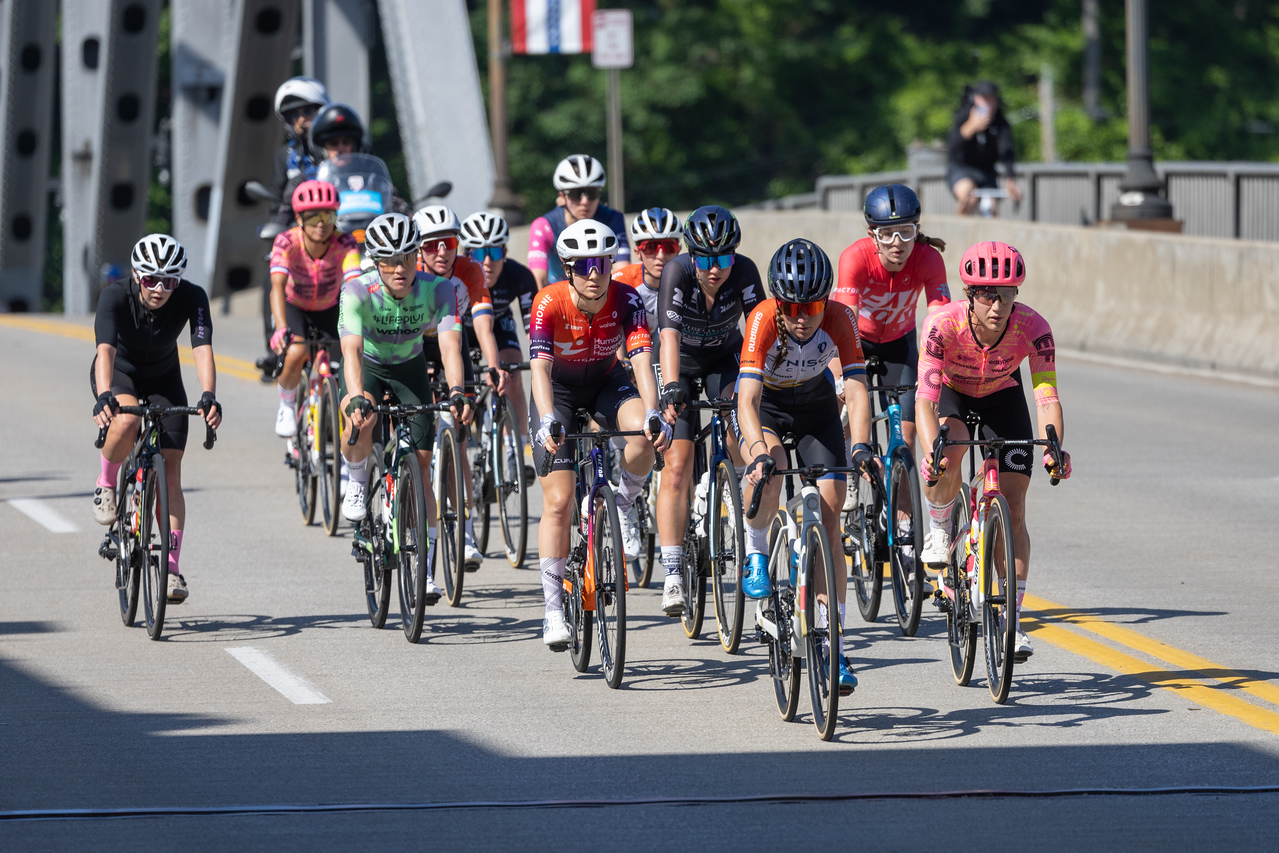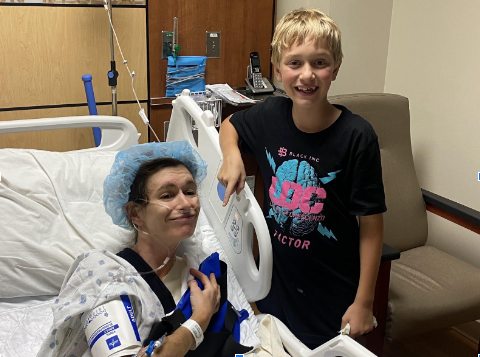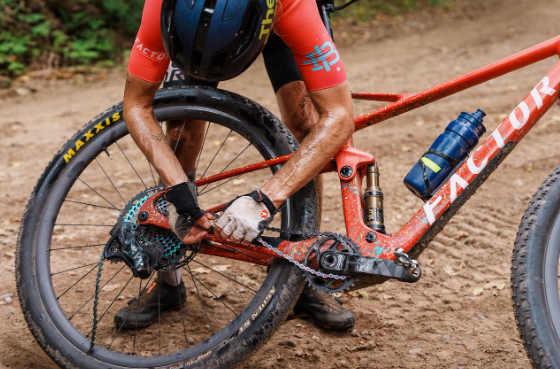The 2024 season marked the beginning of a new chapter for me. It was a season where I stepped away from the comfort of a team and embraced independence.
Until this year, I always had a team mechanic, a logistics coordinator, and other support crew. Now, I wear all those hats and more: a ‘pro’ mechanic, travel guru, social media strategist, and, of course, the fire extinguisher for the unexpected challenges of running a solo operation.
There were both literal and figurative bumps all season – from early-season races at The Mid South and The Growler to Unbound Gravel 200 and SBT GRVL at the peak of the gravel season and then the wind-down at Chequamegon MTB Festival and Big Sugar Gravel. I’ve learned valuable lessons about myself, my bike, and the resilience needed to thrive as a ‘privateer’. Navigating these challenges has made me more adaptable and shown me how self-reliance can be both empowering and humbling.
As gravel continues to evolve, companies like The Feed and Factor Bikes recognize the value in supporting North American off-road athletes. It’s the future of the sport, at least here. I think mass-participation events are the future of bike racing in North America, as they celebrate that sense of community and keep the gravel spirit alive.
I think I might go hungry if not for my Feed stipend. Mia Howle with The Feed has handed me countless feeds at race aid stations. Walter Tate from Factor has stood in numerous hotel parking lots adjusting my shifting and torque specs. While each race is ultimately a solo pursuit, I have key partners close by who help make the races feel more like a team effort.
“We believe athletes like Lauren have the power to inspire their communities and push the limits of what’s possible. Our mission is to fuel their journey by giving them the right nutrition and tools to thrive—whether they’re on the racecourse, in training, or facing everyday challenges,” Howle said.
Here’s what ‘life as a privateer’ across the gravel, mountain bike, and road racing circuits taught me over the 2024 season, starting with the season opener.
The latest race content, interviews, features, reviews and expert buying guides, direct to your inbox!
Never book the cheapest motel
Racing as a privateer means finding ways to cut costs, but at The Mid South in Stillwater, Oklahoma, I learned quickly that saving money on accommodations is not the way to do it. I initially booked the cheapest motel I could find, but after just one night, I decided to move to the 3-star hotel near the start line.
It was worth sacrificing a few extra dollars for my sanity and sleep.
Despite the chaotic leadup, I was able to refocus and recompose myself. This experience served as a reminder that the road to success isn’t always smooth, but with the right mindset, things can always be turned around.
Bring a floor pump
One of the more amusing lessons came at Levi’s Gran Fondo for The Growler, a new Classics-style road race. I assumed somebody would have a floor pump, but when it came time to inflate my 32mm Maxxis High Roads, I was stuck using my mini-hand pump. Traveling by air from Colorado to northern California for the event, I lowered the air pressure in my tires.
It took hundreds of tiny pumps in my little hotel room, with ‘The Office’ playing in the background for good measure, until I finally reached 75 psi in the front and 80 in the rear. Lesson learned: never assume, always over-prepare.
You can’t turn everything into a gravel race

Levi’s Gran Fondo felt like a gravel race on pavement, between the epic climbs and bumpy asphalt – pure power to win the 130-mile inaugural pro women’s race. When I lined up for the US Pro Road National Championships a month later, I was reminded quickly that success in road racing requires more finesse.
It’s easy to get caught up in the adrenaline and want to make every moment challenging. I was reminded of the power of drafting and conserving energy when in the final move with Kristen Faulkner and Ruth Edwards, I could feel my legs screaming in protest, asking, “Why were you on the front so much?”.
The cramping hit hard before the final lap. I was only 49 seconds out of the lead, but I couldn’t follow them for the last 13 miles of the 79-mile race. Faulkner went on to win, while I crossed the line in downtown Charleston, West Virginia in fifth place.
Check your valve core for dried sealant
At Unbound Gravel in Emporia, Kansas, I executed my signature solo move around mile 80 of the 205-mile race, creating a five-minute gap from the chasing peloton. I was flying, until I heard the hiss of air escaping from my tire.
I hit it with CO2, but the valve core was clogged with dried sealant. After several failed attempts, I pushed on, knowing my crew was waiting at the next aid station.
I managed to text them the word “REAR.” I’m not sure they knew what I meant.
After losing valuable time, I was caught by the reduced field before the final checkpoint at Council Grove with 54 miles to go. Although my crew helped with an electric pump, the valve was clogged and wouldn’t take air. Instead of waiting for my crew to resolve the issue, I saw my competitors whizzing by and couldn’t resist chasing.
In hindsight, I should have checked the valve core before the race. More importantly, I should have stayed calm. The 30 extra seconds stopped with my crew could’ve only helped the race outcome. With just 14 psi remaining at the end, I finished ninth in a nine-women sprint.
Always be ready to pivot

After Unbound it was on to Leadville Trail 100 MTB in Leadville, Colorado and SBT GRVL in Steamboat Springs. I just didn’t have it at Leadville, so was looking forward to SBT GRVL the following week.
I was in second place at mile 95 of 124-mile Steamboat Springs race when disaster struck. My front tire exploded in a rut and I broke my landing with my left collarbone. Race over.
I was fortunate to get surgery the night of the race, which is why only two days later I was on the trainer.
It’s not how I envisioned my leadup to the US Pro Gravel Nationals in only three weeks, but I knew what was necessary to be ready. I did three-hour rides in Watopia with Zwift on my Wahoo KICKR and added brisk five-mile hikes wearing my sling to get outside.
Contrary to my initial disbelief, three weeks later I was on the start line in Gering, Nebraska. The collarbone itself hadn’t completely fused back together, but everything was at least in the right place thanks to a few screws.
Still unable to carry a hydration pack because of shoulder pain and fear of breaking my collarbone lurking in the back of my head, I finished second place in the elite women’s field. The takeaway? You never know what life will throw at you. Be ready to pivot and accept the things you can’t change, like broken bones.
Pay attention to the manual – never reuse a master link

Leading to Chequamegon MTB Festival in Cable, Wisconsin, a requirement for Life Time Grand Prix, I meticulously prepped my Factor Lando XC, even giving my chain a fresh coat of wax. When I reinstalled the chain as I built the bike at the Minneapolis airport in the passenger pickup, I reused the same master link from before.
About 25 miles into the 42-mile race, I was in the lead group when my chain snapped. I immediately used my dropper post to use my bike as a “strider” until a fellow rider offered me a spare master link.
I reinstalled the chain thinking I had things under control, but two miles later, the chain snapped again. I started running until another kind stranger offered me his bike from the back of his truck at an unofficial checkpoint.
The bike was too big with a different groupset, but I wasn’t about to drop out of the race. I managed to pass a few competitors and snag some Life Time Grand Prix points when I crossed the line in 19th place. I was later disqualified for riding a spectator’s bike.
I used my phone to purchase 20 new master links on the way home.
One thing at a time
Navigating life’s demands requires careful planning and being able to focus on one thing at a time. When you map out every detail of your day, you find that even the craziest challenges become manageable. So squeezing in a race and then a wedding in the same day, separated by more than 750 travel miles, may have been a bit too challenging.
At Big Sugar Gravel in northwest Arkansas, I finished a respectable fifth-place finish and scored enough Life Time Grand Prix points to land in the top 10 overall.
What makes it more impressive? After a USADA test, podium ceremony, and a shower in my friend’s hotel room, I made it to the Northwest Arkansas airport for a 5:00 p.m. flight to Denver. My husband picked me up on the other with a gown in hand, I changed in the car and made it to my younger brother’s wedding the night of the race.
Resilience, Adaptation, and Growth
Being a privateer in 2024 has improved my adaptability, resourcefulness, and resilience. While a team’s absence brought challenges, it also empowered me to take complete ownership of my racing.
- Chains waxed: 17
- Chains snapped: 1
- Airports: Too many
- Wins: 5
- Podiums: 7
- Miles ridden: Check Strava
- Flyers: UNBOUND, The Rad, Midsouth, The Growler
- Flights: 16 (no Africa trip from original plan)
- Airports visited: 9
I’ve come to further appreciate the value of support. Working closely with my sponsors, Factor Bikes, The Feed, Castelli, Maxxis, and PERC Coffee, has shown me the business side of bike racing. I’ve realized that we’re all striving for the same goal. My success is their success.
I’ve learned to ask for help when I need it, people genuinely want to assist. Whether it’s stopping by the Orange Seal tent for a quick tire check or simply sharing advice, the off-road cycling community is always supportive.
With the lessons learned, I feel more ready to take on another year as a ‘privateer’. Hopefully, most of the mistakes are out of the way. Now it’s time for some well-deserved rest and a trip to Africa for Team Amani Women’s Camp. More on that later!


